Magnolia Historical Society and Magnolia Depot Museum Complex
Introduction
Text-to-speech Audio
Founded in 1993, the Magnolia Historical Society maintains the Magnolia Depot Museum Complex, which includes the original railroad depot building for the town of Magnolia. The depot was built in 1902 as a station on the International and Great Northern Railroad. Although the building was decommissioned in 1963, during the 1990s it was relocated to Melton Street next to the town Community Center, where it was converted into the Magnolia Depot Museum. The museum is run by the Magnolia Historical Society, which also maintains the other historic buildings in the complex, including a 19th-century sawmill, as well as a historic doctor's office and barber shop that belonged to the late Dr. J.M. Ware.
Images
The Magnolia Depot building is now home to the Magnolia Depot Complex, a museum operated by the Magnolia Historical Society
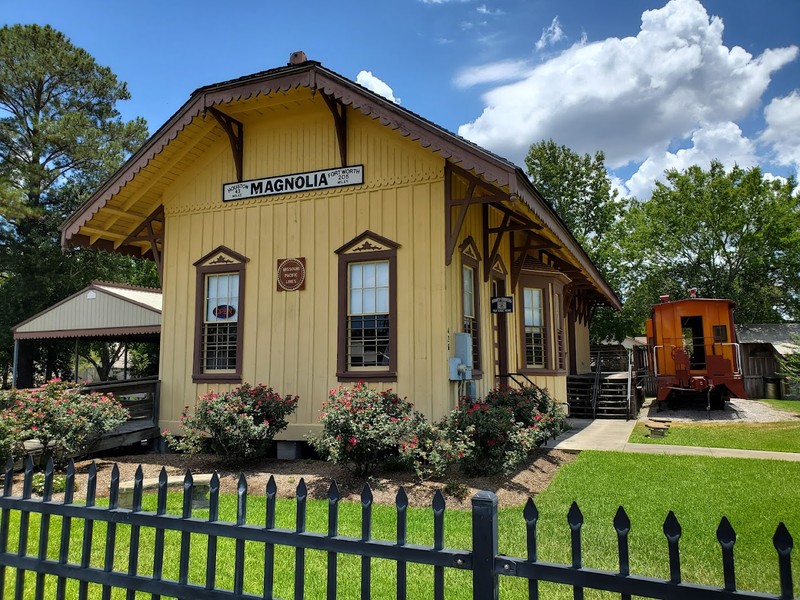
Southern Pacific Caboose
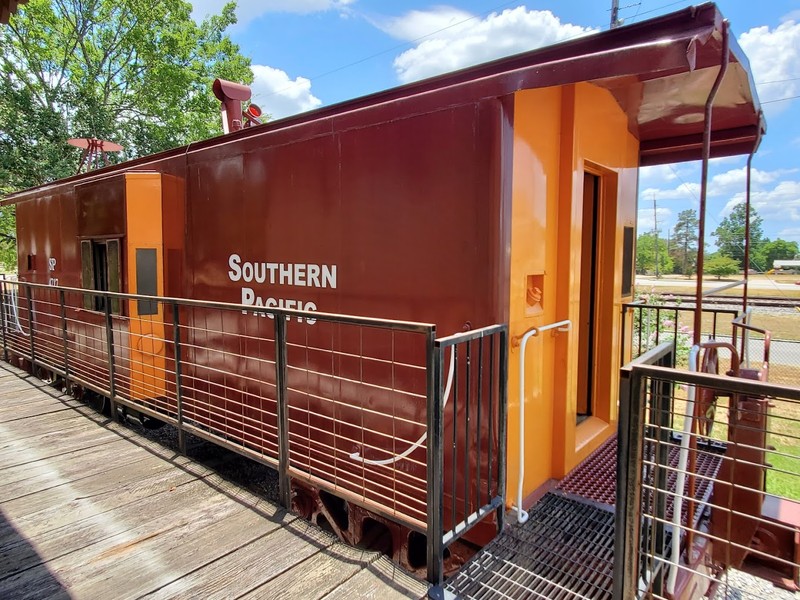
Magnolia Historical Society Plaque
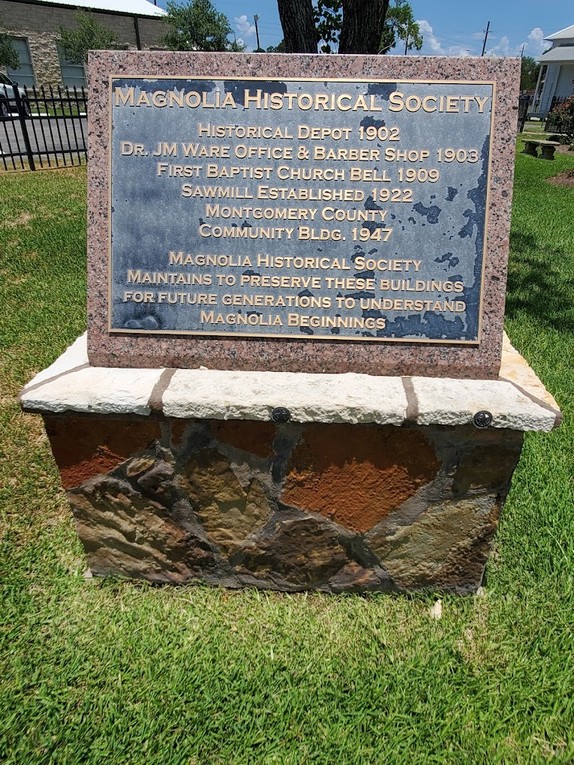
Magnolia Depot building
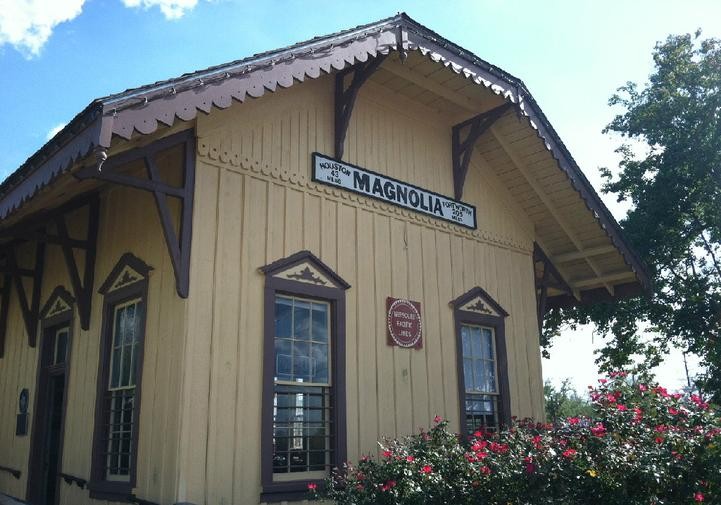
Southwest Pacific Railroad Clock, an artifact on site at the museum
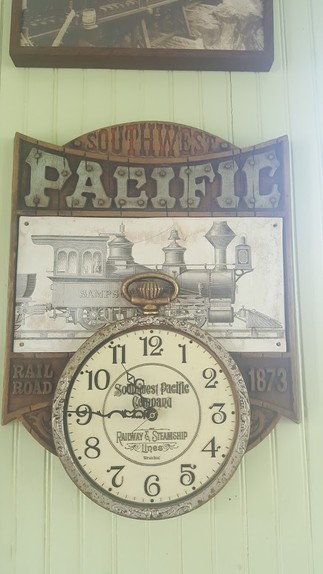
Magnolia Depot Historical Marker
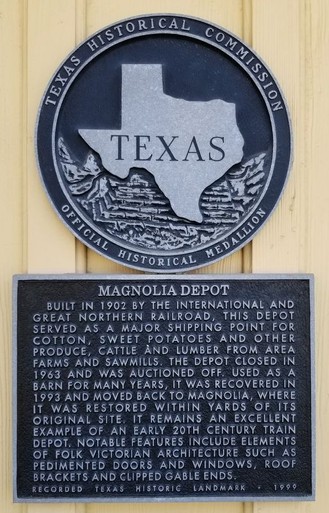
Depot Building and Caboose
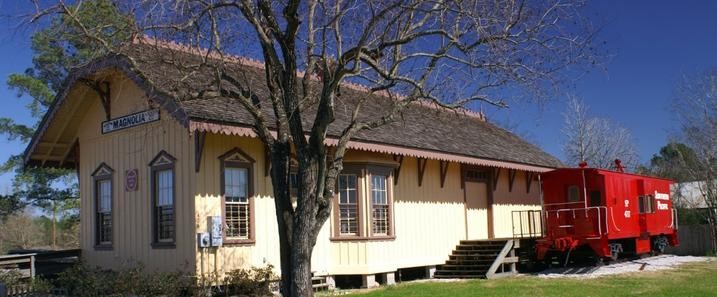
Sawmill at the Magnolia Historical Society
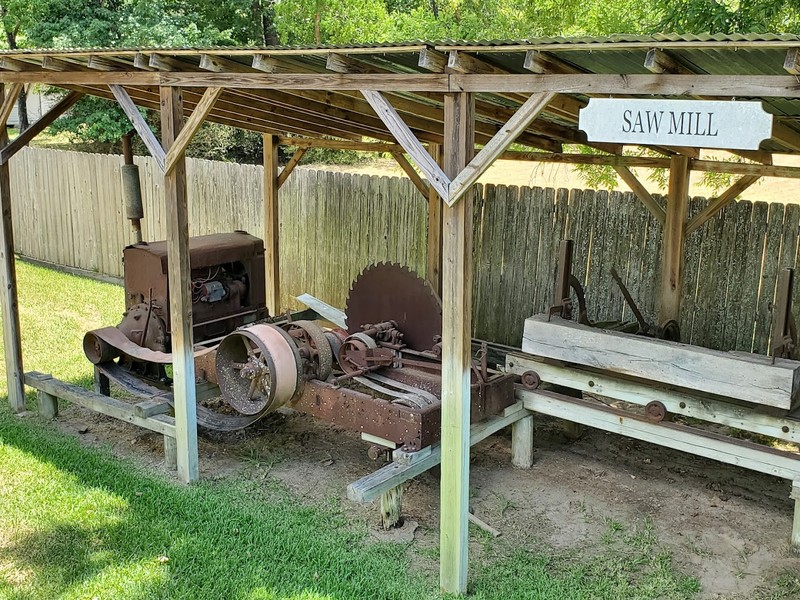
Historic doctor's office and barber shop of the late Dr. J.M. Ware
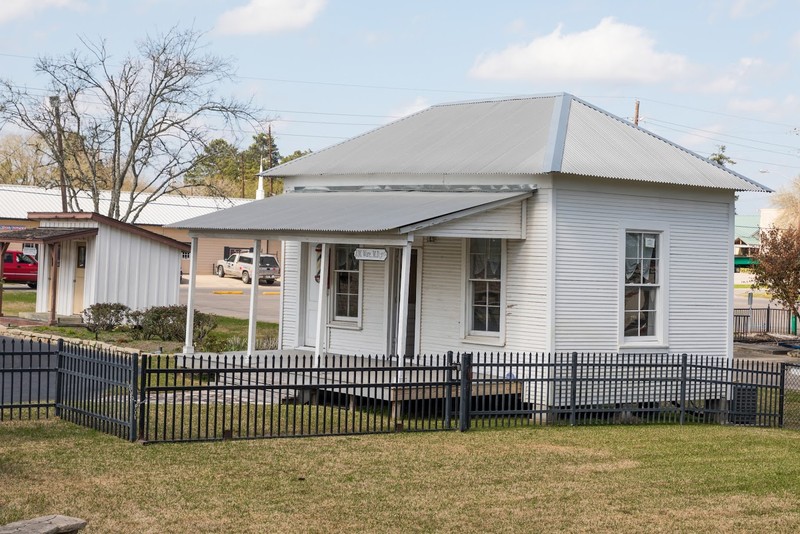
Magnolia Depot building
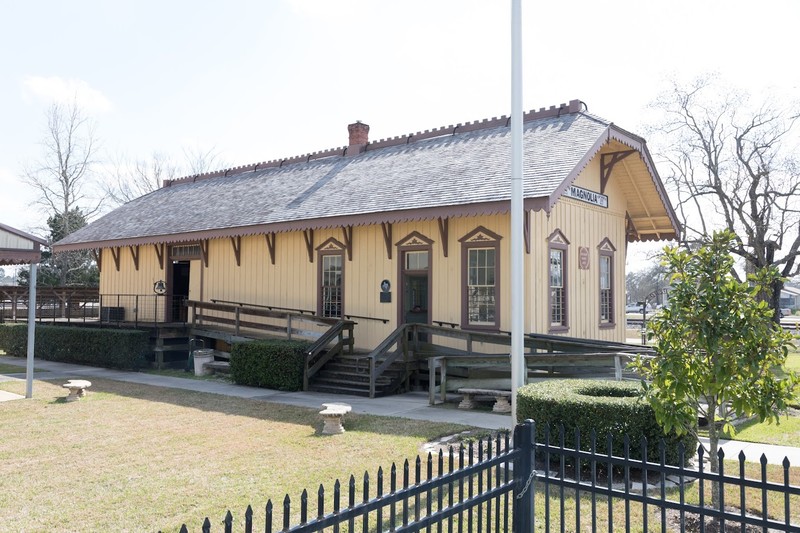
Depot building and caboose
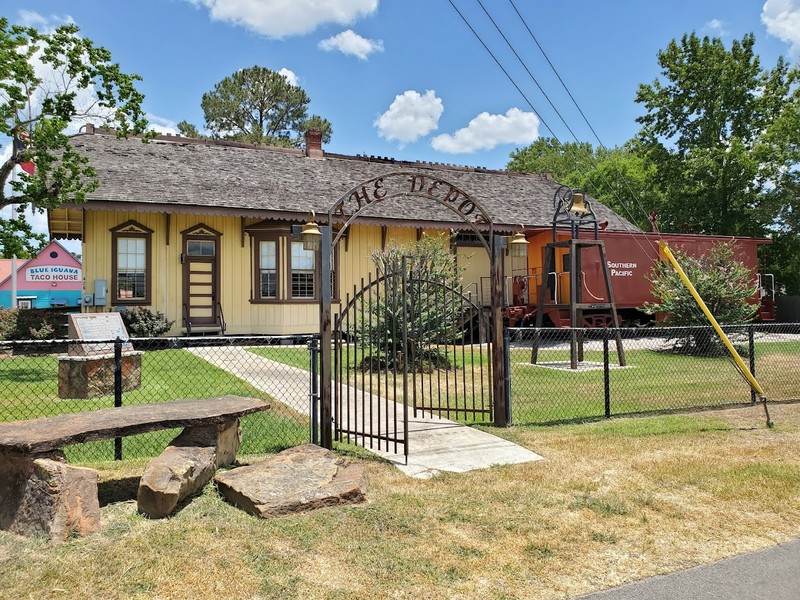
Backstory and Context
Text-to-speech Audio
The Magnolia Railroad Depot building was built in 1902 for the town of Magnolia, Texas, which was previously known as Mink's Prairie or Mink, before being renamed Magnolia in the early 1900s. The station was located along the International and Great Northern Railroad. With the expansion of the railroad in Texas, the town grew quickly, becoming a shipping hub for goods such as sweet potatoes and other produce, as well as cotton, cattle, and lumber. By the mid-20th century, the construction of a federal interstate highway system offered an alternative route for shipping, which led to a decline in transport by rail. The Magnolia Railroad Depot was eventually closed and auctioned off in 1963, after which it was used as a storage barn. Three decades later, however, the building was restored and relocated to Melton Street next to the town Community Center. It became the home of the Magnolia Depot Museum, owned and operated by the Magnolia Historical Society.
The railroad depot is part of a complex of buildings maintained by the historical society. Other buildings in the complex include an antique sawmill from the 19th century. The sawmill continues to be used by the Houston Area Blacksmith Association for workshops and live demonstrations on the craft of forging iron into items such as farm tools or nails. In addition, a small wood-frame house located on-site at the museum complex once served as the doctor's office and barber shop of the late Doctor J.M. Ware. In the 19th and early 20th century, it was not uncommon for country doctors to also work as barbers, a tradition that can be traced back many centuries to the guild system in Europe. Adjacent to the railroad depot building at the museum complex, there is also an example of an antique caboose from the Southern Pacific Railway. This well-preserved railcar features historically accurate paint colors, including the signature shade of red that was often used for caboose cars located at the end of a freight train.
In 1999, a historical marker was placed on the Magnolia Railroad Depot building by the Texas Historical Commission. As noted on the marker, the depot building remains an excellent example of an early 20th-century train depot constructed with folk Victorian architecture. It features pedimented doors and windows, roof brackets, and clipped gable ends. Also, similar to many other railroad depot buildings from the same era, it was painted a characteristic shade of yellow, which was used to ensure that the building would stand out even at a distance, as when approached by an oncoming train. With its historic train depot, red caboose, and other buildings, the Magnolia Depot Complex is a well-preserved museum that conveys an earlier era when the town of Magnolia was becoming part of a regional shipping network through the expansion of the railroad. A covered pavilion at the Magnolia Depot Complex is used throughout the year for community events.
Sources
"About Us", Magnolia Historical Society. Accessed May 23rd, 2023. https://www.magnoliatxhistoricalsociety.com/interesting-links.html.
"Historic Magnolia Depot", Texas Time Travel. Accessed May 23rd, 2023. https://texastimetravel.com/directory/historic-magnolia-depot/.
Hulse, James. "Magnolia Depot", HMDB. March 22nd, 2021. Accessed May 23rd, 2023. https://www.hmdb.org/m.asp?m=169116.
Werner, George C. . "International and Great Northern Railroad", TSHA Online. April 4th, 2017. Accessed May 24th, 2023. https://www.tshaonline.org/handbook/entries/international-great-northern-railroad.
Kim Peckman / Google Images
Kim Peckman / Google Images
Kim Peckman / Google Images
Magnolia Historical Society
Sidney Rodriguez / Google Images
James Hulse / HMDB
Magnolia Historical Society
Kim Peckman / Google Images
Google Images
Bill Staney / Google Images
Kim Peckman / Google Images
